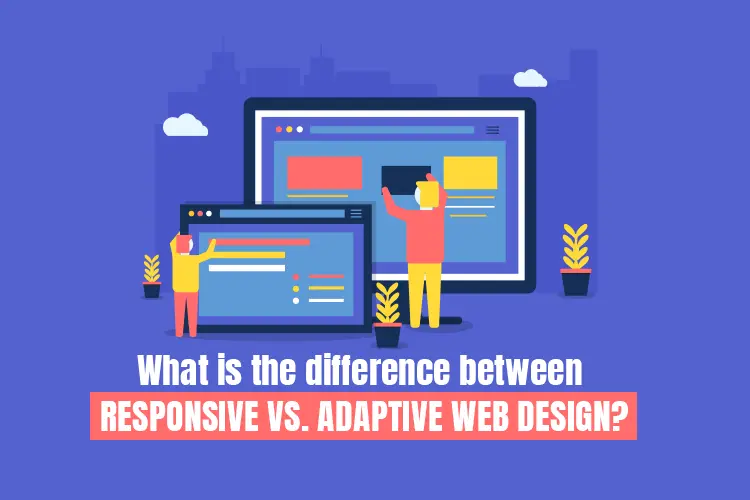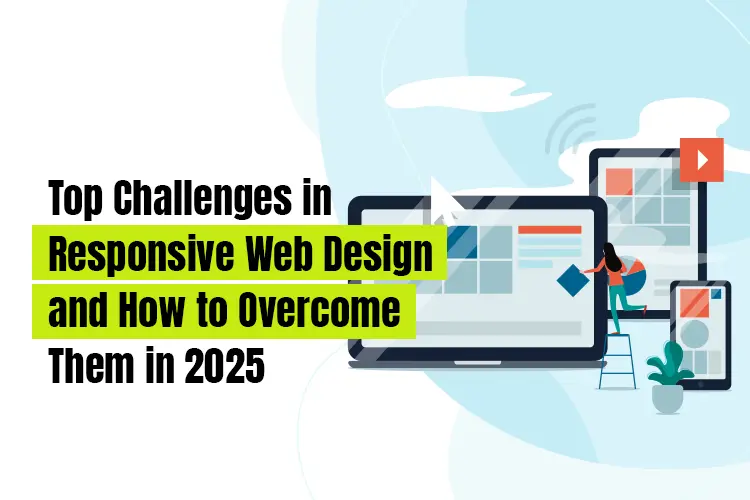Introduction
Imagine this scenario: One day, you are using your smartphone as a browser to access the internet with joy to investigate the new restaurant’s menu. You come across their website and whenever you try to visit it, reading the text is almost impossible, the images appear blurry and if you want to find your way around the site, you are in for a big surprise. Angry, you exit the site and think about how to find another solution. This is the reality in a world that is still breathing heavily in a new age of web design responsiveness or lack of it.
What is Responsive Web Design?
Responsive web design is a concept that enables the web design of a page to automatically adjust its width and content depending on the nature of the visitor’s gadget. This means that if someone uses a smartphone, tablet, or desktop computer their view will be most favorable. The purpose is to preserve content’s usability regardless of its implementation to users with disabilities.
Top Responsive Web Design Challenges and Solutions for 2025
Responsive Web design (RWD) is mandatory for designing a website that will be comfortable on desktop and mobile devices. But, of course, as with any progressing technology, new issues arise when it comes to the topic of responsive design. Some of these challenges are as follows which businessmen need to track while operating in 2025 to get a proper user experience.
Quick Reference Table
| Web Design Challenges | Solution Summary |
| Site Performance | Image optimization, CDN use, lazy loading |
| Navigation Difficulties | Hamburger menus, sticky navigation |
| Content Prioritization | Mobile-first layout, progressive enhancement |
| Browser Compatibility | Cross-browser testing with Browser Stack |
| Accessibility Concerns | Follow WCAG standards, add ARIA attributes |
| Mobile-First Indexing | Optimize for mobile-first design |
| Testing Across Devices | Real device testing, use Viewport Resizer |
| SEO Optimization | Use LSI keywords, Core Web Vitals, Yoast SEO |
| User Experience (UX) Design | Usability testing, optimize visual appeal |
| Keeping Up with Trends | Continuous learning through blogs, webinars |
Responsive web design (RWD) also improves SEO performance as Google gives preference to mobile-friendly websites in search rankings. By ensuring your website is responsive, you can increase your visibility and reach more potential customers. This article discusses the leading issues that affect the process of creating responsive web design, and how they can be solved.
Responsive Web Design Challenges and Their Solutions
1. Optimize Site Performance
Challenge
The greatest difficulty in responsive web design challenges is achieving good performance across all devices. Users are likely to be discouraged by heavy images and complex layouts due to slow connection that is agreed to extra charges on social mobile networks.
Solution
- Use image optimization tools like Tiny PNG or Image Optimize to reduce file sizes without compromising quality.
- Implement lazy loading, so images load only when visible on the screen.
- Limit complex scripts and host content on a Content Delivery Network (CDN) to improve load times.
- Example: Airbnb achieved a 30% increase in site speed by compressing images and reducing server requests.
2. Navigation Difficulties
Challenge
As screens shrink, navigation turns into a problem. If menus are not well planned, users may find it difficult to achieve that which they are looking for.
Solution
- Use simplified menus, like pull-down or hamburger menus, for easy access.
- Keep essential links accessible and ensure readability.
- Implement a sticky navigation bar that remains fixed as the user scrolls.
- Example: Uber’s mobile site uses clear sections like ‘Ride’ and ‘Eat’ in its navigation bar for ease of use.
3. Content Prioritization
Challenge
By applying fixed sizes to all content, navigation on smaller screens is often restricted and too much information is presented to a user.
Solution
- Begin with a mobile-first layout, prioritizing essential information for small screens.
- Use progressive enhancement to include new features for larger screens.
- Example: Amazon’s mobile site displays only critical functions, reserving additional features for larger screens.
4. Browser Compatibility
Challenge
Responsive designs tend to look slightly different across browsers, and since there are multiple ways to create a specific design, your site may not look the same in all browsers.
Solution
- Use tools like Browser Stack or Cross Browser Testing to ensure consistent appearance and functionality across browsers.
- Test early and frequently to identify and resolve compatibility issues.
5. Accessibility Concerns
Challenge
Unfortunately, many of these designs exclude or lack accessibility features making Websites unusable for people with disabilities.
Solution
- Follow Web Content Accessibility Guidelines (WCAG) and use ARIA (Accessible Rich Internet Applications) attributes.
- Ensure color contrast is sufficient and offer alt text for images.
- Enable keyboard navigation and use semantic HTML tags to improve accessibility.
6. Mobile-First Indexing for SEO
Challenge
Google now uses the mobile versions of the site for indexing and ranking which can become a problem if your site is not mobile-friendly.
Solution
- Design with a mobile-first approach, optimizing for mobile devices first.
- Ensure a smooth and engaging mobile experience that aligns with Google’s indexing criteria.
7. Testing Across Devices
Challenge
The maintenance of a similar interface across different devices may take much time and can be rather challenging.
Solution
- Plan a testing strategy that includes real device testing along with emulator tools.
- Consider user testing to gather feedback on functionality and appearance.
- Use tools like Viewport Resizer to quickly test how the site appears on different screen sizes.
8. SEO Optimization
Challenge
Responsive websites must also be optimized for SEO, and this is not a simple task, it calls for planning and process.
Solution
- Structure the website to be intuitive for search engines and users alike.
- Use relevant LSI keywords thoughtfully and avoid keyword stuffing.
- Focus on Core Web Vitals, voice search optimization, and tools like Yoast SEO to ensure effective SEO practices.
9. User Experience (UX) Design
Challenge
A significant challenge when designing for responsive design is the ability to combine beauty with practicality.
Solution
- Implement usability testing with real users to assess visual quality and interactions.
- Collect feedback from both desktop and mobile users to make necessary design improvements.
10. Keeping Up with Trends
Challenge
The nature of the digital environment is constantly evolving which means it might be hard to keep up with the new trends in the field of responsive web design.
Solution
- Regularly expand knowledge through resources like blogs, webinars, and courses.
- Follow web design authorities such as Smashing Magazine and A List Apart for updates on trends and best practices.

Which Design Approach is Better for SEO: Adaptive vs. Responsive web design
Examining the world of SEO, we can state that responsive web design is preferred to adaptive web design. Responsive web design is more popular than adaptive design in SEO reality. Here is a quick comparison of their implications for SEO –
-
Responsive Design Benefits
Single URL structure, mobile-first indexing, and a seamless user experience contribute to higher SEO rankings.
-
Adaptive Design Challenges
Requires multiple URLs, higher maintenance, and often leads to an inconsistent user experience, which can negatively impact SEO.
-
Recommendation for Business Owners
Choose the design approach that best aligns with your SEO goals and budget. For most, responsive web design is the ideal choice.
Both strategies, namely, Responsive Web Design and Adaptive Web Design, come with their list of pros and cons. Such a decision entirely depends on expectations, financial status, and ultimate prospects of the student involved.
To do that, you need to have a grasp of the key distinctions that will allow for the best online experience across multiple devices; as well as align with business goals and strategies.
Future proof Your Website with Responsive Web Design
Responsive web design is a crucial feature that any business enterprise will need to put in mind in their business in the world today. When focusing on performance, navigation, SEO and the user experience, you can guarantee a happy user on any device.
StartMetric Services can help you with responsive web design challenges and their solutions. Our team will come up with unique designs for your company to help you to stand out in today’s market.


